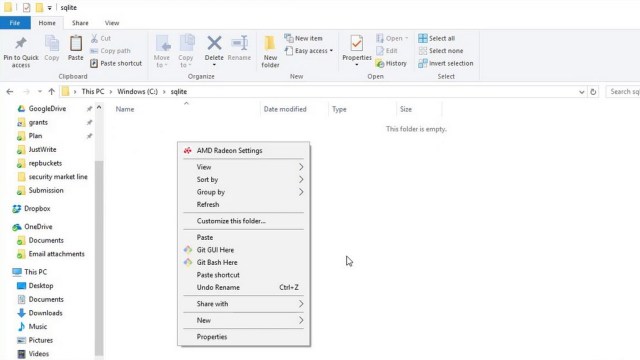
INSERT INTO sharks VALUES ( 2, "Alyoshka", "Great White Shark", 600 ).INSERT INTO sharks VALUES ( 1, "Sammy", "Greenland Shark", 427 ).Now insert three rows of VALUES into your sharks table: Where tablename is the name of your table, and values go inside parentheses. INSERT INTO tablename VALUES ( values go here ).In SQLite, the command for inserting values into a table follows this general form: We will discuss NOT NULL in greater detail in the next section.Īfter creating the table, an empty prompt will return. Using NOT NULL makes that field required. CREATE TABLE sharks (id integer NOT NULL, name text NOT NULL, sharktype text NOT NULL, length integer NOT NULL ).Use the following command to create the table:

The shark’s average length (in centimeters).Now let’s create a table and some columns for various data: SQLite commands are uppercase and user information is lowercase. The rest of this tutorial will follow a common convention for entering SQLite commands. To better visualize a table, one can imagine rows and columns. SQLite databases are organized into tables. With your Shark database created, you will now create a new table and populate it with data. That way you will make sure that the database file was actually created. To make sure that the file gets created, you could run an empty query by typing and then pressing “Enter”. If the file sharks.db does not already exist and if you exit the sqlite promote without running any queries the file sharks.db will not be created. To verify the installation, check the software’s version:įollowing this, your prompt will change.
Sqlite download install#
To install the SQLite command-line interface on Ubuntu, first update your package list: Step 1 - Installing SQLite on Ubuntu 20.04 To set up a server, including a non-root sudo user and a firewall, you can create a DigitalOcean Droplet running Ubuntu 20.04 and then follow our Initial Server Setup Guide.

Sqlite download how to#
For instructions on using SQLite inside your Python code, check out our tutorial, How To Use the sqlite3 Module in Python 3. For an excellent overview of popular relational databases and how they compare, check out our article, SQLite vs MySQL vs PostgreSQL: A Comparison Of Relational Database Management Systems.Īdditionally, many languages maintain integrations with SQLite. It does not cover larger conceptual issues and production concerns, such as when one should, or should not, consider using a SQLite database. Note: This tutorial includes practical instructions for installing and using SQLite.


 0 kommentar(er)
0 kommentar(er)
